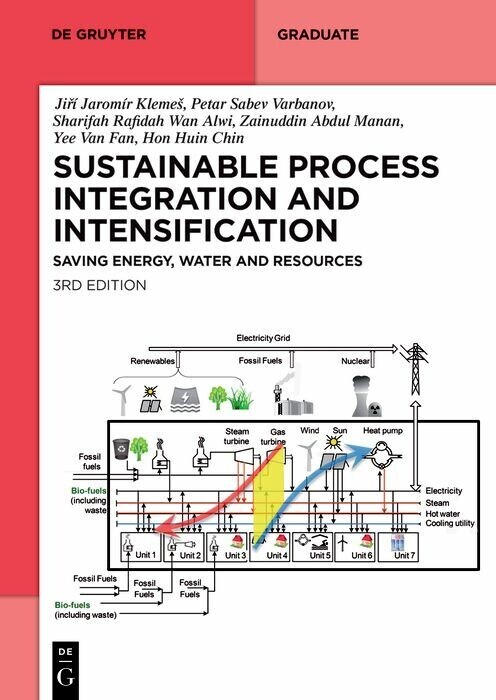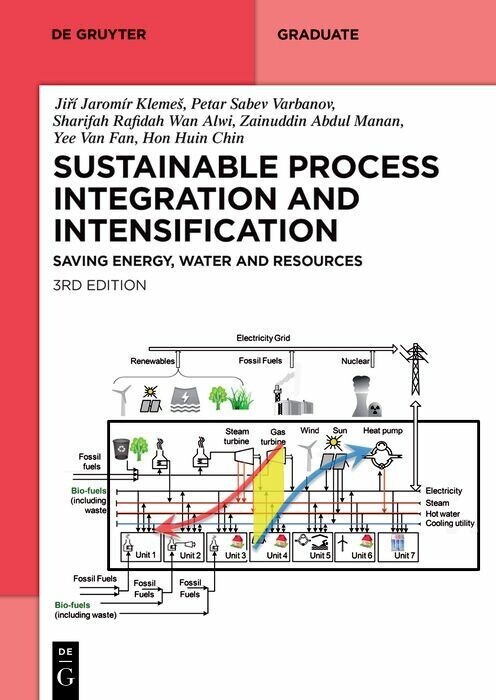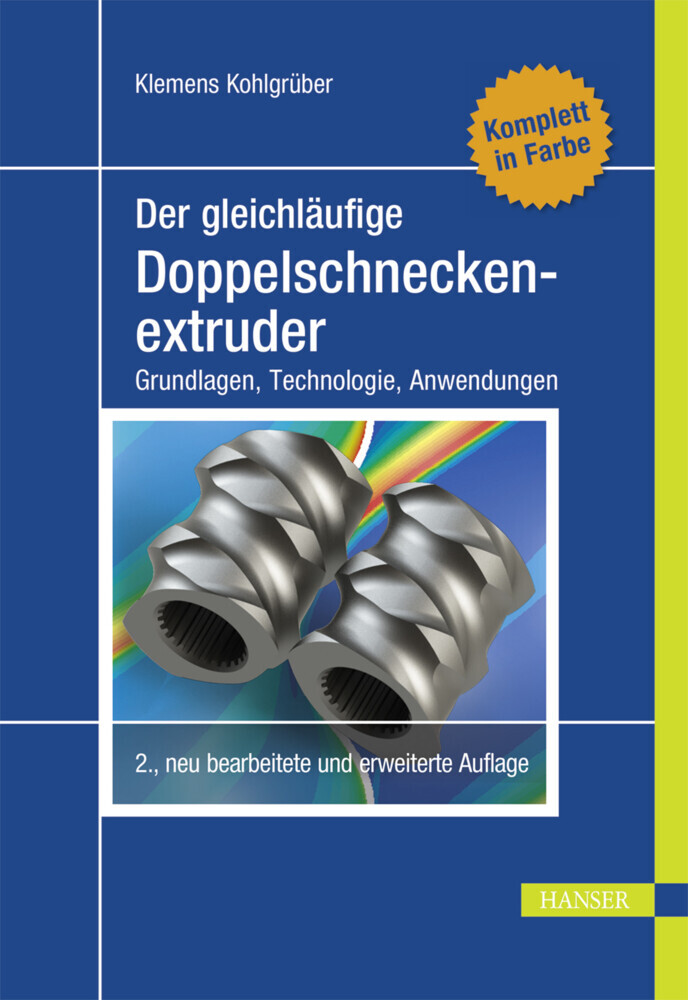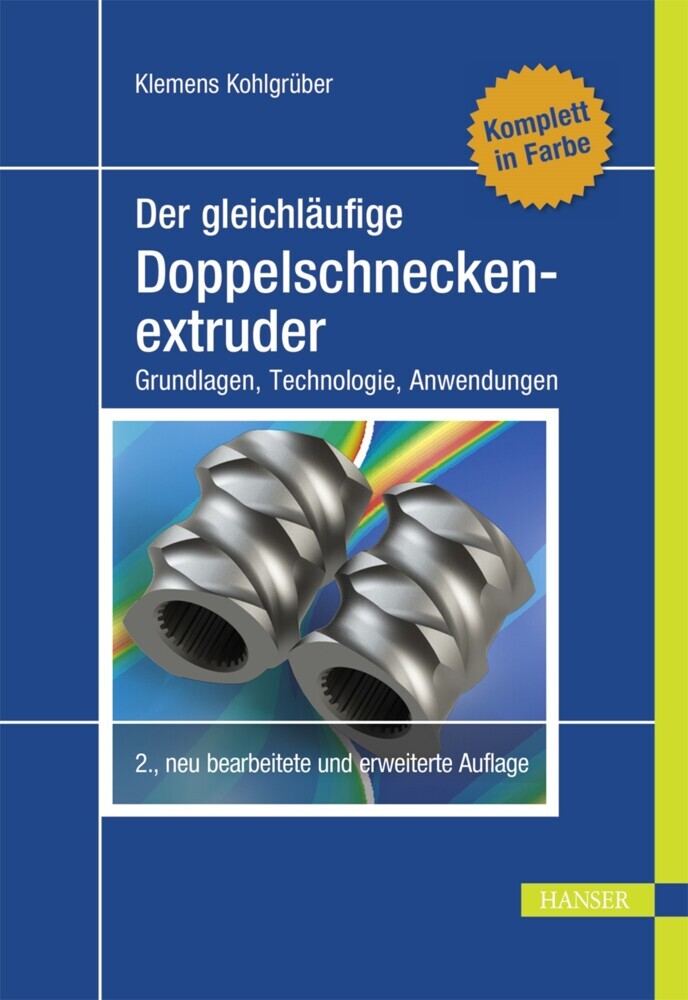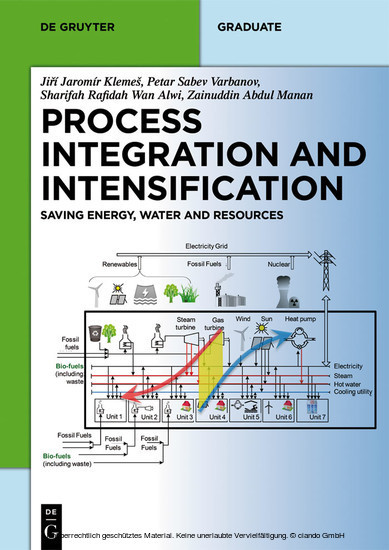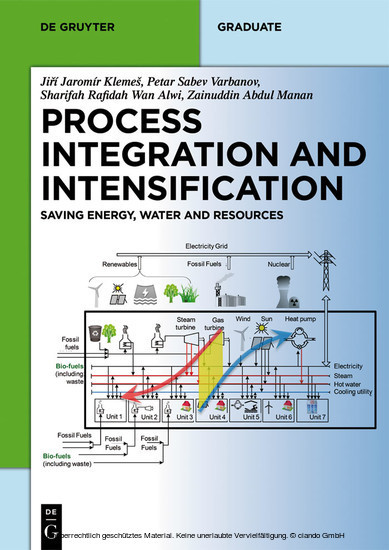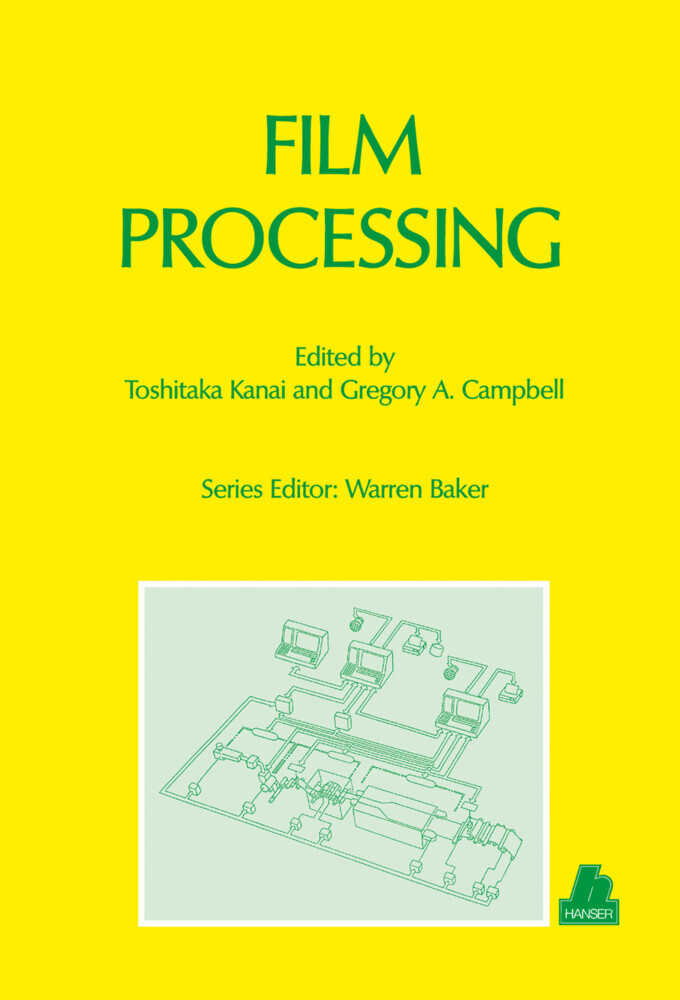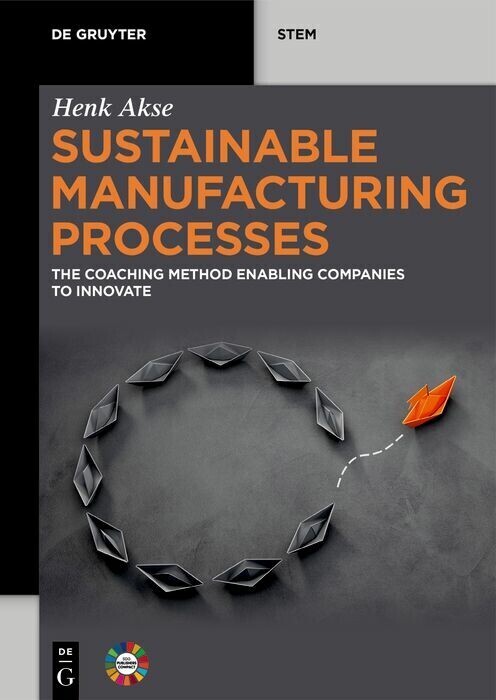Understanding Plastics Engineering Calculations
Hands-on Examples and Case Studies
The plastics engineer working on the shop floor in a plastics manufacturing plant often needs quick answers to questions such as why the extruder output is low or whether he can expect better quality product by changing the resin or if the die pressure can be lowered. Applying state-of-the art numerical software to address these issues is time-consuming and costly.
Starting from practical design formulas which are easily applicable, and yet take the resin rheology into account, this guide provides answers to these questions quickly and effectively by guiding the user step by step through the computational procedures on the basis of illustrative technical examples.
Problems related to melt fracture, homogeneity of the melt, effect of screw geometry on the quality of the melt and the effect of die pressure on the pellet surface and their troubleshooting are only few of the topics among many that are dealt with in detail.
All the calculations involved can be handled by pocket calculators and hence can be performed right on the site where the machines are running. This guide is a valuable tool not only to troubleshoot but also to estimate the effect of design and process parameters on the product quality in plastics processing.
Starting from practical design formulas which are easily applicable, and yet take the resin rheology into account, this guide provides answers to these questions quickly and effectively by guiding the user step by step through the computational procedures on the basis of illustrative technical examples.
Problems related to melt fracture, homogeneity of the melt, effect of screw geometry on the quality of the melt and the effect of die pressure on the pellet surface and their troubleshooting are only few of the topics among many that are dealt with in detail.
All the calculations involved can be handled by pocket calculators and hence can be performed right on the site where the machines are running. This guide is a valuable tool not only to troubleshoot but also to estimate the effect of design and process parameters on the product quality in plastics processing.
1;Table of Contents;62;Preface;103;1Rheological Properties of Molten Polymers;123.1;1.1 Polymer Melt Flow;123.1.1;1.1.1 Apparent Shear Rate;133.1.2;1.1.2 Apparent Viscosity;143.1.3;1.1.3 Power Law of Ostwald and De Waele;143.1.4;1.1.4 Viscosity Formula of Klein;153.1.5;1.1.5 Resin Characterization by Power Law Exponent;163.2;1.2 Melt Flow Index;183.3;1.3 Relationship between Flow Rate and Pressure Drop;193.4;1.4 Shear Rates for Extrusion Dies;213.5;References.;244;2Thermal Properties of Solid and Molten Polymers;264.1;2.1 Specific Volume;264.2;2.2 Specific Heat;294.3;2.3 Thermal Expansion Coefficient;304.4;2.4 Enthalpy;314.5;2.5 Thermal Conductivity;334.6;2.6 Thermal Diffusivity;344.7;2.7 Coefficient of Heat Penetration;354.8;2.8 Heat Deflection Temperature;364.9;2.9 Vicat Softening Point;374.10;References.;395;3Heat Transfer in Plastics Processing;405.1;3.1 Steady State Conduction;405.1.1;3.1.1 Plane Wall;415.1.2;3.1.2 Cylinder;425.1.3;3.1.3 Hollow Sphere;425.1.4;3.1.4 Sphere;435.1.5;3.1.5 Heat Conduction in Composite Walls;435.1.6;3.1.6 Overall Heat Transfer through Composite Walls;475.2;3.2 Unsteady State Conduction;485.2.1;3.2.1 Temperature Distribution in One-Dimensional Solids;495.2.2;3.2.2 Thermal Contact Temperature;565.3;3.3 Heat Conduction with Dissipation;585.4;3.4 Dimensionless Groups;595.5;3.5 Heat Transfer by Convection;625.6;3.6 Heat Transfer by Radiation;645.7;3.7 Dielectric Heating;685.8;3.8 Fick's Law of Diffusion;705.8.1;3.8.1 Permeability;705.8.2;3.8.2 Absorption and Desorption;715.9;3.9 Case Study: Analyzing Air Gap Dynamics in Extrusion Coating by Means of Dimensional Analysis;725.9.1;3.9.1 Heat Transfer Between the Film and the Surrounding Air ;735.9.2;3.9.2 Chemical Kinetics;745.9.3;3.9.3 Evaluation of the Experiments;765.10;References.;776;4Analytical Procedures for Troubleshooting Extrusion Screws;786.1;4.1 Three-Zone Screw;796.1.1;4.1.1 Extruder Output;806.1.2;4.1.2 Feed Zone;806.1.3;4.1.3 Metering Zone (Melt Zone);826.1.4;4.1.4 Practical Design of 3-Zone Screws;896.2;4.2 Melting of Solids;946.2.1;4.2.1 Thickness of Melt Film;946.2.2;4.2.2 Melting Profile;986.2.3;4.2.3 Melt Temperature;1026.2.4;4.2.4 Melt Pressure;1036.2.5;4.2.5 Heat Transfer between the Melt and the Barrel;1046.2.6;4.2.6 Screw Power;1066.2.7;4.2.7 Temperature Fluctuation of the Melt;1096.2.8;4.2.8 Pressure Fluctuation;1106.2.9;4.2.9 Extrusion Screw Simulations;1106.2.10;4.2.10 Mechanical Design of Extrusion Screws;1186.3;References.;1217;5Analytical Procedures for Troubleshooting Extrusion Dies;1227.1;5.1 Calculation of Pressure Drop;1237.1.1;5.1.1 Effect of Die Geometry on Pressure Drop;1247.1.2;5.1.2 Shear Rate in Die Channels;1257.1.3;5.1.3 General Relationship for Pressure Drop in Any Given Channel Geometry;1257.1.4;5.1.4 Examples for Calculating Pressure Drop in the Die Channels of Different Shapes;1267.1.5;5.1.5 Temperature Rise and Residence Time;1347.2;5.2 Spider Dies;1357.3;5.3 Spiral Dies;1407.4;5.4 Adapting Die Design to Avoid Melt Fracture;1417.4.1;5.4.1 Pelletizer Dies;1437.4.2;5.4.2 Blow Molding Dies;1437.4.3;5.4.3 Summary of the Die Design Procedures;1457.5;5.5 Flat Dies;1467.6;5.6 An Easily Applicable Method of Designing Screen Packs for Extruders;1487.7;5.7 Parametrical Studies;1547.7.1;5.7.1 Pipe Extrusion;1547.7.2;5.7.2 Blown Film;1577.7.3;5.7.3 Thermoforming;1607.8;References.;1638;6Analytical Procedures for Troubleshooting Injection Molding;1648.1;6.1 Effect of Resin and Machine Parameters;1658.1.1;6.1.1 Resin-Dependent Parameters;1658.1.2;6.1.2 Mold Shrinkage and Processing Temperature;1668.1.3;6.1.3 Drying Temperatures and Times;1688.2;6.2 Melting in Injection Molding Screws;1688.2.1;6.2.1 Model;1698.2.2;6.2.2 Results of Simulation;1728.2.3;6.2.3 Screw Dimensions;1748.3;6.3 Injection Mold;1748.3.1;6.3.1 Runner Systems;1748.3.2;6.3.2
| ISBN | 9783446431492 |
|---|---|
| Artikelnummer | 9783446431492 |
| Medientyp | E-Book - PDF |
| Copyrightjahr | 2012 |
| Verlag | Carl Hanser Fachbuchverlag |
| Umfang | 196 Seiten |
| Abbildungen | 26 Tabellen, 169 SW-Abb. |
| Sprache | Englisch |
| Kopierschutz | Digitales Wasserzeichen |


